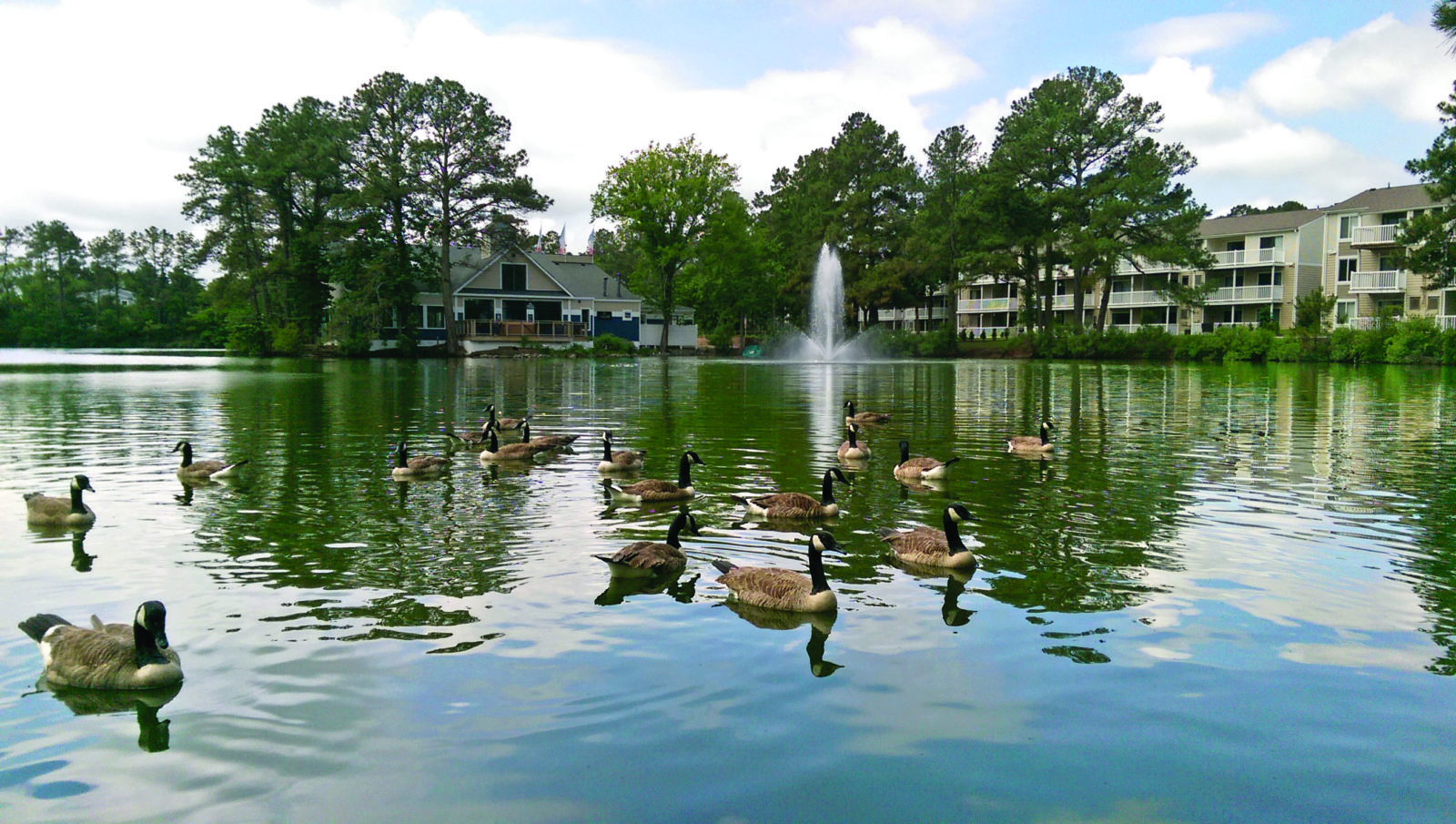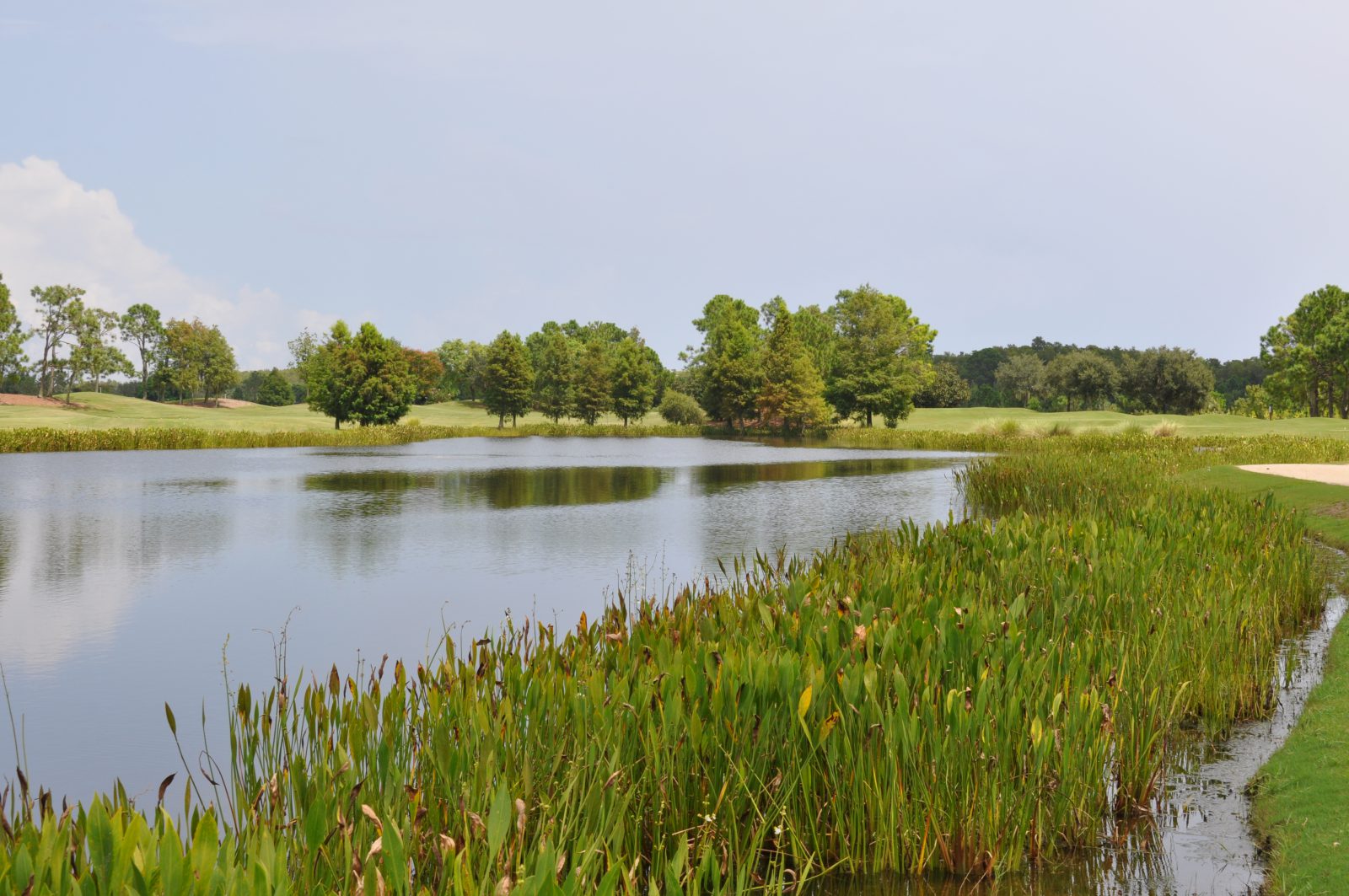
Goose Chase: Methods for Effective Goose Control
By Greg Blackham, Aquatic Specialist
Resident Canada geese populations in North America are estimated at 4 million. Chances are that they have found your community pond. Even more likely is that the residents of your community consider them to be a nuisance — they can be aggressive, cause unsanitary conditions, and destroy property at a rapid rate. Their numbers have grown at an incredible pace over the last few decades and they are becoming a widespread problem in urban and suburban areas. Don’t get me wrong… I love geese, but they are not a great fit for ponds in developed areas.
Before I discuss mitigation strategies I want to stress the first and most important rule in geese control. DO NOT LET PEOPLE FEED THEM! Feeding them creates an unhealthy relationship with humans, causes a slew of health hazards for the birds, and encourages them to return to a dysfunctional setting.
You may not realize you have a geese problem until it is too late. Often, complete goose control can never be achieved, but a happy medium can be found by repelling the majority of the birds and discouraging further mating at your pond. Adult Canada geese can live more than 20 years and they mate every year, usually at the same pond. Their young generally return to their birthplace to reproduce as well. If, for example, four geese from every clutch survive to be mating adults, it does not take complicated mathematics to see how exponential population growth occurs. Controlling nesting habits is much less costly than controlling already large populations.
According to the non-profit organization, GeesePeace, the mating season occurs from February to early April and nesting starts in late March and goes through mid-May. Gosling maturing and foraging occurs between mid-May and early July, while molting, or the flightless period when geese shed their outer wing feathers and regrow new ones, occurs in the span from mid-June through early August. Pond hopping and foraging occurs the rest of the year from August through February.
There are limited goose control methods that can be started in the summer months, but now is the best time to plan out your overall goose control management program to start up in January or February. If you can successfully repel the mating couples from choosing your pond as a suitable nesting area, this will save you the most money. Discouraging geese from choosing your pond is dependent on the local environment. The couple needs to feel safe from predators before they will be comfortable building a nest. The following methods are, in my experience, the best ways of discouraging nesting and overall desirability for geese residency in general. Keep in mind that there is no silver bullet to discourage geese. Geese are highly intelligent and adaptive, so it is incredibly difficult to fool them for a long time. And to really expel them, you may need a professional management company or state agency to help out.
The most effective and natural goose repellant is:
Tall, thick, vegetated buffer around the pond.
I am not talking about a little strip of scraggly vegetation. You need a buffer at least 3 feet tall by 2 feet wide for this to be really effective.

Some less natural but also effective goose repellents are:
Monofilament line completely enclosing the perimeter of the pond or area you are trying to repel.
The line should be set at about 12 inches high. Even better than one line, is two lines staggered about 6 inches vertically.
Monofilament line in a grid over the surface of the pond.
The closer the lines in the grid, the more success you will probably have. The line should be about 12 inches above the surface. Unfortunately this is unattractive and less effective than buffers.

The least effective repellants are:
Noise emitting devices:
Horns or cannon blasts, balloons, flashy tape or lights.
Predator decoys:
Dog, wolf, or coyote models, owls or alligator heads. There are many products being sold that tout high success rates but I have seen very few with much long term success. When using scaring techniques, like the wolf or owl decoys, the scaring device needs to be moved every couple of days. If they see the same “predator” in the same spot for about a week, it will not be effective once they determine it is not a threat.
Repelling geese should not be done during their molting phase. Geese molt their feathers in late June and for approximately six weeks are flightless. It would be inhumane and ineffective to try and scare them off during this time because they have nowhere to go. You may need to herd them away from sensitive areas during this time, but you should seek guidance from the state or a professional before doing so.
If you cannot discourage mating couples from residing on your pond late winter through early spring, then your next step is to consider nest and egg control. Canada geese nests and eggs are protected by federal and state regulations and you will need to get a permit before destroying or tampering with any eggs or the nest. The permit is very simple and can be done online at https://epermits.fws.gov/eRCGR/geSI.aspx. Before registering, you should train the person who will actually be addling the eggs and familiarize yourself with the proper procedures. The only accepted methods of addling the eggs are shaking, puncturing and oiling. Oiling is the most effective and humane method and is done with 100% food grade corn oil. A good resource for these procedures can be found at http://www.aphis.usda.gov/wildlife_damage/downloads/canada_goose.pdf. By addling eggs and correctly destroying nests, the mating couple no longer has any particular attachment to your pond for the duration of the season. Using border collies during this time (but before summer molting) is highly efficient and should be done if the community is serious about controlling their resident geese.
As with all successful programs, Canada geese control begins with proper community planning. To be done right, the community needs to be well-educated and armed with the right tools for long term success. There are many state agencies and professionals that can help you develop a management strategy. Contact your State Wildlife Service Agency or local pond management professionals to learn more about local regulations, effective strategies, and helpful tips on geese control.
Find Your Goose Control Solution
Call 888-480-5253 or Complete the Form Below









